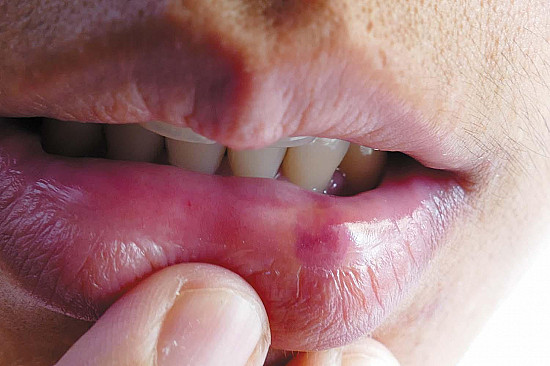Absence seizures (petit mal seizures)
- Reviewed by Robert H. Shmerling, MD, Senior Faculty Editor, Harvard Health Publishing; Editorial Advisory Board Member, Harvard Health Publishing
What are absence seizures?
The brain's nerve cells (neurons) communicate by firing tiny electric signals. During a seizure (convulsion), the firing pattern of these electric signals suddenly changes. It becomes unusually intense and abnormal.
A seizure can affect a small area of the brain, or it can affect the entire brain. If the whole brain is involved, it is called a generalized seizure.
The two most common forms of generalized seizures are:
- generalized seizures (grand mal seizures)
- absence seizures (petit mal seizures).
Both forms of generalized seizures cause a temporary loss of consciousness.
An absence seizure causes a loss of consciousness for 30 seconds or less. It may be barely noticeable and easily overlooked by an observer. The person with absence seizures simply stops moving or speaking. He or she typically stares straight ahead blankly and does not respond to questions.
A person can have 50 or 100 absence seizures a day. When the absence seizure ends, the person goes back to his or her normal activities. He or she may not realize that anything abnormal has happened. The condition is more common in children than adults; the average age at the time of diagnosis is 4 to 10 years old.
Epilepsy is a brain disorder that causes recurrent seizures if untreated. A child with repeated absence seizures is said to have childhood absence epilepsy or petit mal epilepsy.
In most cases, the reason for the seizures is unknown. Genetic (inherited) factors and brain injury may play some role in the development of absence seizures.
Symptoms of absence seizures
During an absence seizure, a child is temporarily unaware of what is happening around him or her. For a few brief seconds, the child stops what he or she is doing. He or she stares straight ahead and does not respond to people speaking.
During a seizure, a child's eyelids may blink or flicker very quickly. Or an arm or a leg may twitch, jerk, or move for no obvious reason.
After the seizure ends, the child typically has no memory of the episode and resumes previous activities as if nothing happened. There usually is no confusion or recovery period after an absence seizure.
A child with absence epilepsy can have many brief seizures during a school day. As a result, the disorder may interfere seriously with their ability to pay attention and participate in class. For this reason, a teacher may be the first adult to notice that something is wrong. If the teacher is not familiar with absence seizures, he or she may assume that the child is simply not paying attention or just daydreaming.
Outside the classroom, the child's symptoms may affect their ability to concentrate when he or she plays sports or does homework. Seizures also may interrupt conversations with friends or family members.
Diagnosing absence seizures
The doctor will ask you to describe your child's symptoms. He or she will ask how often the symptoms occur and how long they last. The doctor also will ask whether any other members of your family have had similar symptoms or have received treatment for any type of epilepsy.
The doctor will review your child's medical history, including and history of birth trauma or serious head injury. The doctor will perform a thorough physical exam, including a complete neurologic examination.
Routine blood tests may follow. These will check for common medical illnesses that either can mimic epilepsy or trigger seizures. In most cases, the results of your child's physical exam and blood tests will be normal.
As a final step in the diagnostic process, your doctor may order an electroencephalogram (EEG). An EEG is a painless test that detects the electrical activity in your child's brain and translates it into a series of printed patterns. In many children with absence epilepsy, the EEG shows a specific pattern that confirms the diagnosis.
In some cases, your child's doctor may be concerned that the absence seizures are related to a structural abnormality as well as electrical abnormality of the brain. The doctor may order a magnetic resonance imaging (MRI) test or a computed tomography (CT) scan of your child's brain. Reasons to obtain an imaging test include:
- an unusual pattern of symptoms
- abnormal findings on the physical or neurological examination
- a condition that would put the child at higher risk of seizures, such as
- birth trauma
- head injury
- encephalitis
- meningitis.
Expected duration of absence seizures
Most children outgrow absence epilepsy, usually by their teen years. Before then, anti-epilepsy medication is used to control the symptoms.
Preventing absence seizures
As the cause of most absence seizures is unknown, the condition cannot be prevented. Preventing head trauma (for instance, by wearing a helmet when biking) may be helpful to prevent some cases of epilepsy marked by absence seizures.
Treating absence seizures
If your child has absence epilepsy, the doctor will treat the condition with medication to help control the number of absence seizures your child has. They are known as anticonvulsants (also called antiepileptic or antiseizure drugs).
The three most commonly prescribed anticonvulsant medications to treat absence epilepsy are ethosuximide (Zarontin), valproic acid (Depakene, Depakote), and lamotrigine (Lamictal). Ethosuximide is generally the first choice of newly diagnosed absence seizures and is highly effective in most children.
Controlling absence epilepsy can help your child reach his or her full potential at school and home. Once your child begins taking an effective seizure medicine, treatment usually continues for at least two years after seizures are well controlled.
When to call a professional
Call your child's doctor if you notice that your child has:
- staring spells
- brief periods of deep daydreaming
- other behaviors that may be symptoms of absence seizures.
If your child's teacher reports that your child is not paying attention or frequently tunes out or daydreams, ask the teacher whether your child shows other symptoms of absence seizures, such as:
- staring straight ahead and not responding to others
- blinking repeatedly
- twitching while daydreaming.
Ask your child’s teachers to provide a detailed description of your child's behaviors. Have the teacher estimate how long each episode lasts and the number of episodes per day.
Then, check to see whether you notice any of these same behaviors at home and discuss the situation with your child’s doctor.
Prognosis
The outlook is generally good. Most children with absence epilepsy eventually outgrow the condition without complications.
In most cases, there is no long-term effect on brain development, brain function, or intelligence.
Additional info
National Institute of Neurological Disorders and Stroke
https://www.ninds.nih.gov/
American Academy of Neurology (AAN)
https://www.aan.com/
American Academy of Pediatrics (AAP)
https://www.aap.org/
Epilepsy Foundation of America (EFA)
https://www.epilepsyfoundation.org/
About the Reviewer

Robert H. Shmerling, MD, Senior Faculty Editor, Harvard Health Publishing; Editorial Advisory Board Member, Harvard Health Publishing
Disclaimer:
As a service to our readers, Harvard Health Publishing provides access to our library of archived content. Please note the date of last review or update on all articles.
No content on this site, regardless of date, should ever be used as a substitute for direct medical advice from your doctor or other qualified clinician.















